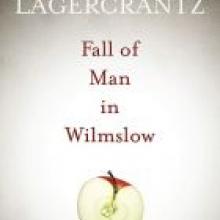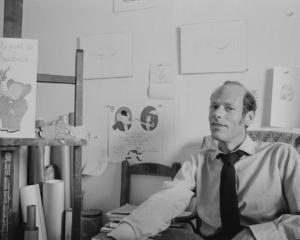
In the lead-up to the 70th anniversary of the end of World War 2 there has been a revival of interest in events and people that paved the way for Allied victory, particularly the men and women at Bletchley Park, whose breaking of the Germans' Enigma Code arguably turned the tide of the war.
Chief among them is the tragic figure of Alan Turing, whose posthumous recognition as a national hero is a direct contrast to the vilification to which he was subjected during the last years of his life.
In Fall of Man in Wilmslow, Swedish author David Lagercrantz uses a fictional framework to paint a portrait of not only the man and his work, but also the prevailing socio-political forces that saw Turing persecuted, cut off from the research that had formed the centre of his life, and eventually driven to suicide.
The novel opens on June 8, 1954, with the arrival of Detective Inspector Leonard Corell at the house where Turing has been found dead in his bed, a cyanide-laced apple on the table next to him.
Although the death is promptly certified as a suicide, Corell finds himself fascinated by the man, not least because the case revives the detective's own dreams of studying mathematics, which were dashed by circumstances beyond his control.
Convinced there is something more to the matter than meets the eye, he takes it upon himself to seek out the truth, and in so doing he brings himself to the attention of same Home Office officials whose paranoid persecution of homosexuals as both moral defectives and potential Soviet spies probably contributed to Turing's death.
The novel shifts perspective between Corell and a variety of other narrators, including Oscar Farley, Turing's friend and immediate superior at Bletchley Park, and their stories intertwine with the mathematician's own, culminating in an epilogue that takes us 30 years into Corell's future and a victory of sorts for both men.
In trying to balance the factual and fictional components of the story, Lagercrantz has set himself a difficult assignment, with mixed results.
Although the police-procedural format works well for the physical aspects of Turing's life, a proper appreciation of his contributions to mathematics and computing requires a degree of knowledge of certain key theories that cannot be taken for granted, and herein lies the novel's major flaw.
These are introduced as miniature lectures from Turing's colleagues and excerpts from the mathematical texts in which Corell immerses himself, and it is as if the author has stepped in to to say ''I'll get back to the story in a minute but there are a few things you need to know first'', a perception that is heightened in comparison with the novel I am currently reading, Zia Haider Rahman's In the Light of What we Know, which introduces similar concepts without breaking the fourth wall.
It is in the unconstrained passages when Lagercrantz (who has just completed a continuation of Stieg Larsson's Millennium series) immerses us in the characters' interior lives and memories that the story really flows.
These are the moments that linger in the mind.
• Cushla McKinney is a Dunedin scientist.











